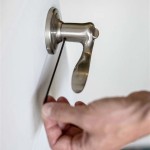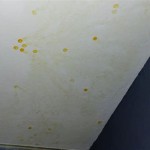Can You Vent a Bathroom Fan Into the Sewer Lines?
Bathroom fans are essential for removing moisture, odors, and pollutants from the air, creating a healthier and more comfortable environment. When considering ventilation options, one might wonder if it's feasible to vent a bathroom fan directly into the sewer lines. While this approach might seem like a practical solution, it's crucial to understand the potential risks and complications involved.
Venturing into unorthodox ventilation methods can lead to unforeseen issues and potentially compromise the integrity of your plumbing system. This article will delve into the reasons why venting a bathroom fan into the sewer lines is generally not recommended, exploring the potential consequences and offering alternative solutions for effective bathroom ventilation.
Potential Risks of Venting a Bathroom Fan into Sewer Lines
Venting a bathroom fan into the sewer lines poses several risks that could negatively impact the health and functionality of your plumbing system.
Firstly, it creates a potential pathway for sewer gases to escape into your bathroom. Sewer gases are a mix of harmful chemicals and bacteria that can cause nausea, headaches, and respiratory problems. While sewer systems are typically designed to contain these gases, introducing a direct vent could allow them to permeate into the bathroom, creating an unsafe environment.
Secondly, venting the fan into the sewer lines increases the risk of clogs and blockages. The fan's exhaust could carry hair, lint, and other debris into the sewer lines, contributing to the accumulation of materials that can obstruct the flow of wastewater. This can lead to unpleasant odors, overflowing toilets, and costly plumbing repairs.
Finally, the constant flow of air from the fan can create negative pressure within the sewer system. This pressure imbalance can draw air from other vents or fixtures, potentially transporting sewer gases into other areas of your home.
Alternatives for Effective Bathroom Ventilation
Instead of considering unconventional methods, it's recommended to explore proven and safe solutions for bathroom ventilation. Here are some effective alternatives:
1. Venting to the Exterior: This is the most common and widely recommended approach. It involves installing a dedicated vent pipe that runs from the bathroom fan to the exterior of your house. This ensures that the moist air and odors are expelled directly outdoors, preventing any potential risks associated with sewer line venting.
2. Venting to the Attic: Vent to the attic is an option if you have proper ventilation in your attic space. This approach should only be considered if the attic is well-ventilated and there's no risk of moisture accumulation that could lead to mold or mildew growth.
3. Using a Ductless Fan: Ductless bathroom fans are designed to exhaust air directly into the room, without requiring a vent pipe. While these fans offer convenience, they may not be as effective as vented fans in removing large volumes of humid air.
Proper Installation and Maintenance
Regardless of the ventilation method you choose, proper installation and regular maintenance are critical for optimal performance and longevity. It's recommended to consult with a qualified HVAC professional or plumber to ensure that your bathroom fan is installed correctly and meets local building codes.
Regularly cleaning the fan blades, vent covers, and exhaust duct can prevent the buildup of dirt, dust, and other debris that can hinder airflow and efficiency. Also, consider checking the fan's speed and noise levels for any anomalies that might suggest a malfunction.
Maintaining a healthy and comfortable bathroom environment requires careful consideration of ventilation choices. Venting a bathroom fan into the sewer lines presents significant risks and should be avoided. Instead, explore proven and safe methods like venting to the exterior, attic, or utilizing ductless fans. Implementing these alternatives and practicing proper installation and maintenance will ensure your bathroom fan effectively removes moisture and odors, creating a healthy and safe space for you and your family.
Does Every Toilet Need A Vent Pipe Quora

Plumbing Vent Piping Air Must Get Into Pipes Askthebuilder Com

Quick Tip 23 Fixing A Drip At The Bathroom Fan Misterfix It Com

Can You Vent A Bathroom Exhaust Fan Into The Attic Diy Round Table
What Happens If You Don T Vent Plumbing Quora

How To Vent A Bathroom With No Outside Access
Does Rain Water Get Into A Vent Pipe Quora

How To Vent A Toilet Sink And Shower Drain
Can You Pour Drano Down The Vent Pipe Quora

How To Plumb A Toilet Vent Distance Pipe Size
Related Posts







